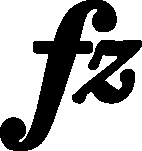



|
b. 4
|
composition: Op. 10 No 2, Etude in A minor
..
We give the alternative fingering on the basis of Chopin's entry in FEcor. In finished FE (→GE1→GE2,EE) those three digits were mistakenly put one semiquaver earlier. Repetition of the same error in EE is of particular surprise, as the fingering was revised and added by Fontana (cf. bar 12). Revisers of GE3, GE4 and GE5 tried to respectively simplify the fingering's notation and to make it more precise in this place; however, none of them realised the essence of the mistake. category imprint: Differences between sources issues: Errors in FE , Authentic corrections of FE |
|||||||||||
|
b. 4
|
composition: Op. 10 No 2, Etude in A minor
..
The corrections of the rhythm written in FEcor confirm that the crotchets in CLI and Ap is the original version, changed by Chopin in all three analogous places (bars 12 and 39). category imprint: Differences between sources; Corrections & alterations |
|||||||||||
|
b. 4
|
composition: Op. 10 No 2, Etude in A minor
..
The category imprint: Graphic ambiguousness; Interpretations within context; Differences between sources issues: Long accents , Errors in FE , Sign reversal |
|||||||||||
|
b. 4
|
composition: Op. 10 No 2, Etude in A minor
..
The accent visible in FE (→GE,EE) should be rather interpreted as a short one, yet in FE even shorter signs were used, e.g., in the Etude in C major, No. 1, bars 1-2. Also the sign put in Ap (next to category imprint: Interpretations within context; Differences between sources issues: Long accents |
|||||||||||
|
b. 4
|
composition: Op. 10 No 2, Etude in A minor
..
The authenticity of the b note's hold is undoubtedly certified only in Ap (only in this bar – cf. bars 12 and 39). The ties featured in a part of the first editions are either possibly (GE) or certainly (EE3, probably under the influence of GE) a revision. Arbitrarily added, allegedly missing ties in the places in which not all components of two-note chords or chords are held with ties are to be found in first editions of Chopin's pieces on a number of occasions. To the main text we adopt the undoubtedly authentic version of FE (→EE2→EE3). category imprint: Differences between sources issues: EE revisions , GE revisions |










 in
in 

 in
in 

 & accent in
& accent in 


